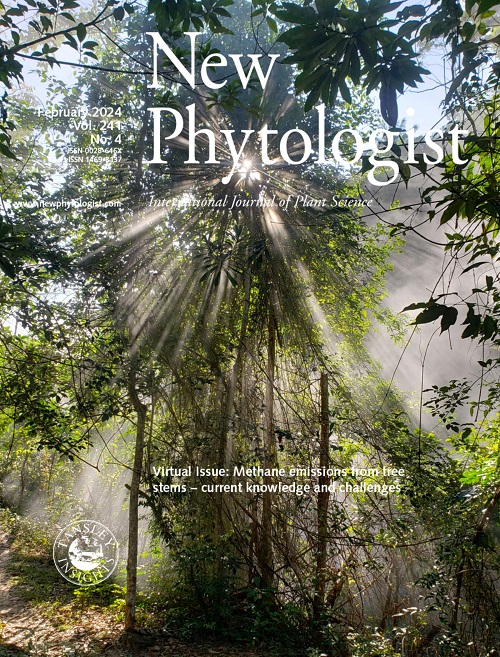热成像捕捉了旱地功能类型对降雨事件时间和量级变化的差异敏感性
IF 8.1
1区 生物学
Q1 Agricultural and Biological Sciences
引用次数: 1
摘要
美国西南部的旱地正在迅速变暖,降雨变得越来越少,越来越强烈,这对生态系统的结构和功能产生了重大的影响,但人们对其知之甚少。基于热成像的植物温度估计可以与空气温度相结合,以推断植物生理变化和对气候变化的响应。然而,在降雨脉冲驱动的旱地生态系统中,很少有研究在高时空分辨率下评估植物温度动态。我们通过将高频热成像纳入半干旱草原的野外降水操纵实验来研究降雨时间重新包装的影响,从而解决了这一空白。所有其他因素保持不变,我们发现较少/较大的降水事件导致较低的植物温度(1.4°C)相比,许多/较小的降水事件。多年生植物在最小/最大处理下比一年生植物温度低2.5℃。我们发现,这些模式是由以下因素驱动的:在最少/最大的处理中,较深层土壤水分有效性增加并保持一致;多年生植物较深的根部提供了较深的植物可用水。我们的研究结果强调了高时空分辨率热成像技术在量化植物功能群对土壤水分有效性的差异敏感性方面的潜力。探测这些敏感性对于理解水文气候变化的生态水文影响至关重要。本文章由计算机程序翻译,如有差异,请以英文原文为准。
Thermography captures the differential sensitivity of dryland functional types to changes in rainfall event timing and magnitude
- Drylands of the southwestern United States are rapidly warming, and rainfall is becoming less frequent and more intense, with major yet poorly understood implications for ecosystem structure and function. Thermography-based estimates of plant temperature can be integrated with air temperature to infer changes in plant physiology and response to climate change. However, very few studies have evaluated plant temperature dynamics at high spatiotemporal resolution in rainfall pulse-driven dryland ecosystems.
- We address this gap by incorporating high-frequency thermal imaging into a field-based precipitation manipulation experiment in a semi-arid grassland to investigate the impacts of rainfall temporal repackaging.
- All other factors held constant, we found that fewer/larger precipitation events led to cooler plant temperatures (1.4°C) compared to that of many/smaller precipitation events. Perennials, in particular, were 2.5°C cooler than annuals under the fewest/largest treatment.
- We show these patterns were driven by: increased and consistent soil moisture availability in the deeper soil layers in the fewest/largest treatment; and deeper roots of perennials providing access to deeper plant available water. Our findings highlight the potential for high spatiotemporal resolution thermography to quantify the differential sensitivity of plant functional groups to soil water availability. Detecting these sensitivities is vital to understanding the ecohydrological implications of hydroclimate change.
求助全文
通过发布文献求助,成功后即可免费获取论文全文。
去求助
来源期刊

New Phytologist
PLANT SCIENCES-
CiteScore
17.60
自引率
5.30%
发文量
728
审稿时长
1 months
期刊介绍:
New Phytologist is a leading publication that showcases exceptional and groundbreaking research in plant science and its practical applications. With a focus on five distinct sections - Physiology & Development, Environment, Interaction, Evolution, and Transformative Plant Biotechnology - the journal covers a wide array of topics ranging from cellular processes to the impact of global environmental changes. We encourage the use of interdisciplinary approaches, and our content is structured to reflect this. Our journal acknowledges the diverse techniques employed in plant science, including molecular and cell biology, functional genomics, modeling, and system-based approaches, across various subfields.
 求助内容:
求助内容: 应助结果提醒方式:
应助结果提醒方式:


